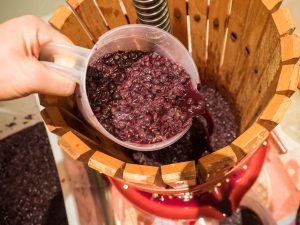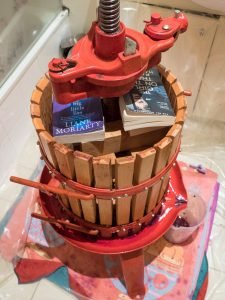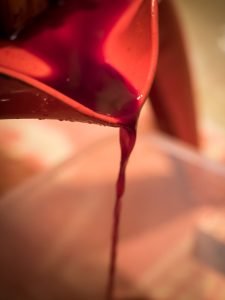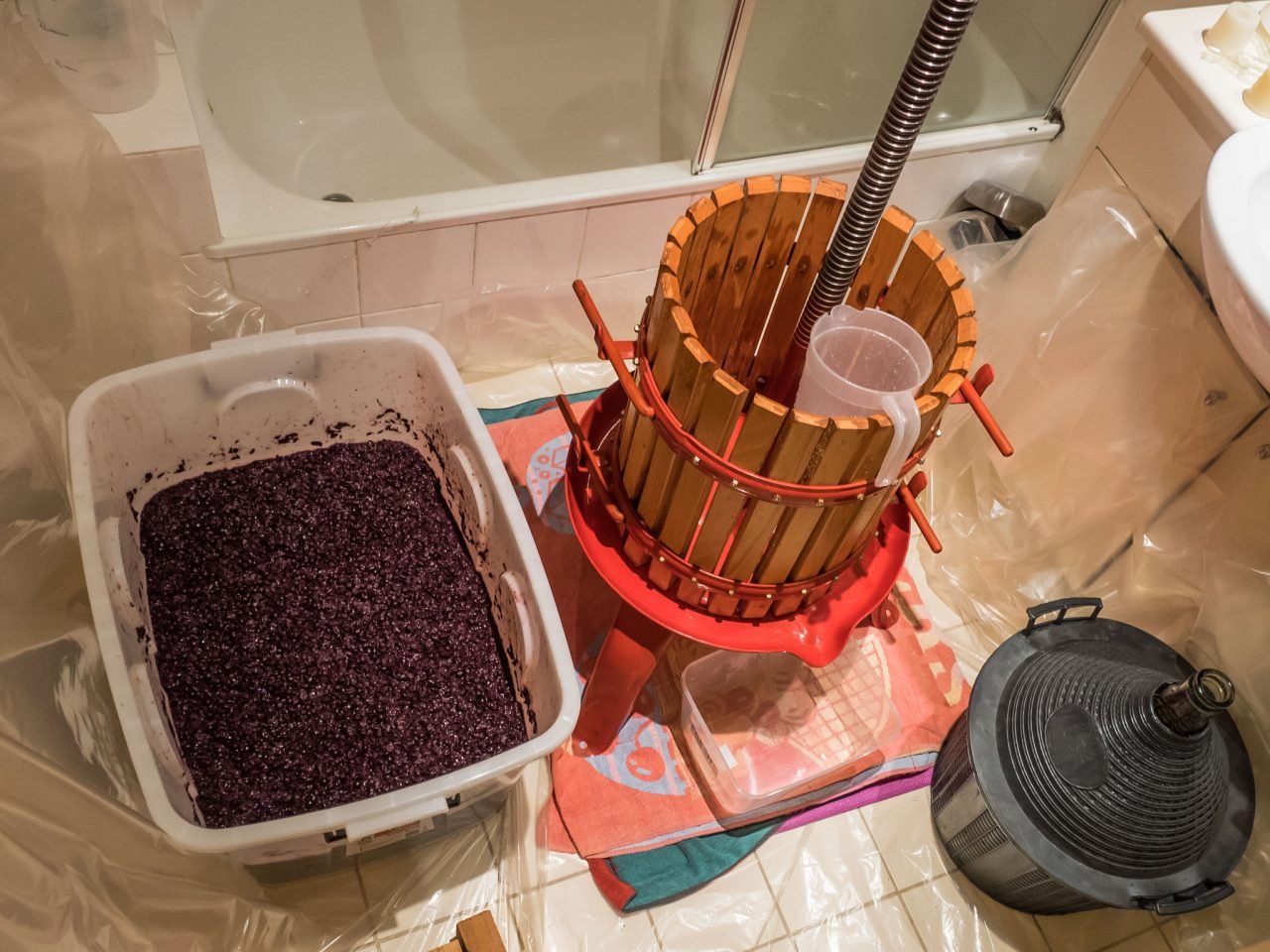After last week’s fermentation had finished, we were ready for The Press
The Press
 Our wine has been tested twice daily to determine when the sugars have all been fermented to lovely booze. It is amazing how fast the yeast work their magic; the sugar dropped dramatically over a few short days.
Our wine has been tested twice daily to determine when the sugars have all been fermented to lovely booze. It is amazing how fast the yeast work their magic; the sugar dropped dramatically over a few short days.
A few days after our last post we were ready to press the must and put the juice (or should we call it wine at this stage?!) into a large demijohn for a while to age. Our only issue was that we didn’t have a wine press! Grain and Grape, our local gurus, only had large ones to rent. Fortunately, Melbourne is on the edge of a few different wine regions, with plenty of hobby wine makers around. Just a little bit of hunting and Phil found someone selling a second-hand wine press. It was in good shape a good size for this batch. Future vintages are now sorted. We have yet to name it but it feels like we should… Maybe a competition is in order? The winner could home a bottle of the first ever Class to Glass vintage! Who knows – it could be famous one day?!
 The big squish
The big squish
Pressing the must is a potentially messy job so we took some tips out of Dexter‘s playbook. We covered every surface which might give us away with plastic sheeting, making sure we didn’t leave any ‘evidence’ of our miniature winery (and also to be sure we get our bond back when we move out!)
The basic design of the basket press hasn’t changed  for around 1000 years (the oldest wine press ever found was in Armena and was dated to around 6000BC!).
for around 1000 years (the oldest wine press ever found was in Armena and was dated to around 6000BC!).
Grapes and must are scooped into a basket with gaps in the sides for the liquid to flow through. A plate and wooden blocks are then placed on top of the grapes, and pressure applied to crush them and squeeze out as much remaining juice as possible. Manual presses use a screw mechanism to apply pressure through the blocks to the plate onto the grapes. As they get more compressed, you need to add blocks to ensure  that you can press as much juice as possible from the must. Our press was a little small for this batch of wine and we ran out of blocks so we had to enlist a couple of books into the process. No books were harmed I promise!
that you can press as much juice as possible from the must. Our press was a little small for this batch of wine and we ran out of blocks so we had to enlist a couple of books into the process. No books were harmed I promise!
 The juice
The juice
There is a surprising difference between the juice which is produced at different stages of pressing. The ‘free-run’ juice comes off the must before any squishing has started. It was the most acidic fraction and had some good fruit flavours. I sensed a lot of cherry and plum which is great for a Shiraz. As we progressed through to the ‘final press’, the juice became more tannic (from the skins) and, surprisingly, a little sweeter. This was due to the grapes that had not been crushed completely and still had some sugars in them. The aroma of the final press wine also showed some herbaceous characteristics so once this is all blended together in the final wine I think we could be on to a good thing!
In another few weeks, after the sediment has settled to the bottom we’ll do the first racking. This is where we transfer the wine from one demijohn to another leaving behind as much sediment as possible. An oak stave is also included to intensify the flavour. Now we just wait…

